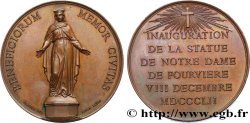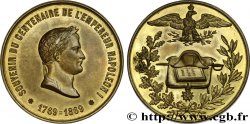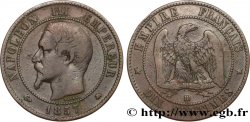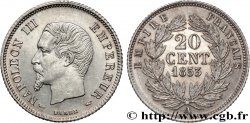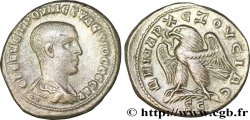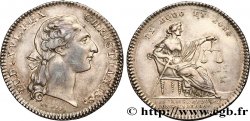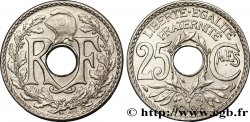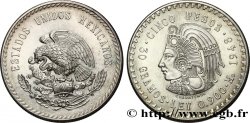v10_0123 - 100 francs Napoléon III tête nue 1858 Paris F.550/5
MONNAIES 10 (2000)
起拍价 : 381.12 €
估价 : 838.47 €
竞价记录 : 830.85 €
起拍价 : 381.12 €
估价 : 838.47 €
竞价记录 : 830.85 €
种类 100 francs Napoléon III tête nue
日期: 1858
铸币厂名称/城市 Paris
铸币数量 91945
材质 gold
纯度、成色(用角密度) 900 ‰
直径 35 mm
模子方针 6 h.
重量 32,37 g.
侧面 en relief ***** DIEU * PROTEGE * LA * FRANCE
关于品相的说明
Excellente frappe, très joli lustre, coins très frais, flans mats mais bien réfléchissants. On remarque très nettement la différence entre le premier 8 de 1858 et le second : la texture du flan à l'intérieur du second est beaucoup moins lisse : la preuve que la matrice du coin portait 185 et que le 8 final a été rajouté directement sur le coin par l'ouvrier monnayeur. On constate de la même manière que le champ à l'intérieur du A de lettre d'atelier est lui aussi irrégulier : il a aussi été rajouté sur le coin à partir d'un poinçon. C'est le privilège de ceux qui ont des monnaies en états exceptionnels à étudier que de pouvoir ainsi retrouver ainsi l'histoire technique d'une monnaie. Agréable contraste, petites différences de densité dans la surface d'origine sur les champs. Tranche bien en relief, très légèrement décentrée, listel très régulier et harmonieux, un léger coup exactement au-dessus du Ç de FRANÇAIS, précisément à plat sur le listel. Impact visuel excellent, une petite irrégularité de la surface d'origine au-dessus de l'effigie impériale, minuscules rayures à droite et à gauche de la croix qui surmonte la couronne au revers et en dessous du premier 8 de 1858. La loupe x10 ne révèle guère d'autres détails, hormis quelques minuscules égratignures et un affaiblissement de la surface d'origine, principalement sur les points les plus haut des ciselures du revers, une mèche de la moustache et une sur la barbiche
正面
正面的文字 NAPOLEON III - EMPEREUR.
正面的说明书 Tête nue de Napoléon III à droite ; signé BARRE à l'exergue.
背面
背面的文字 EMPIRE - FRANÇAIS // 100 - FRS // A 1858.
背面的说明书 Écu orné d'un aigle posé sur un foudre, entouré du collier de la Légion d'Honneur, posé sur un manteau brochant un sceptre et une main de justice.
评论
Cet exemplaire est celui de la COLLECTION IDÉALE. Il illustre le type dans le FRANC III en couleurs. Plus bel exemplaire répertorié pour le type dans la COLLECTION IDÉALE.








 对产品描述纠错
对产品描述纠错 打印
打印 分享我的选择
分享我的选择 提问
提问 Consign / sell
Consign / sell
 产品介绍
产品介绍